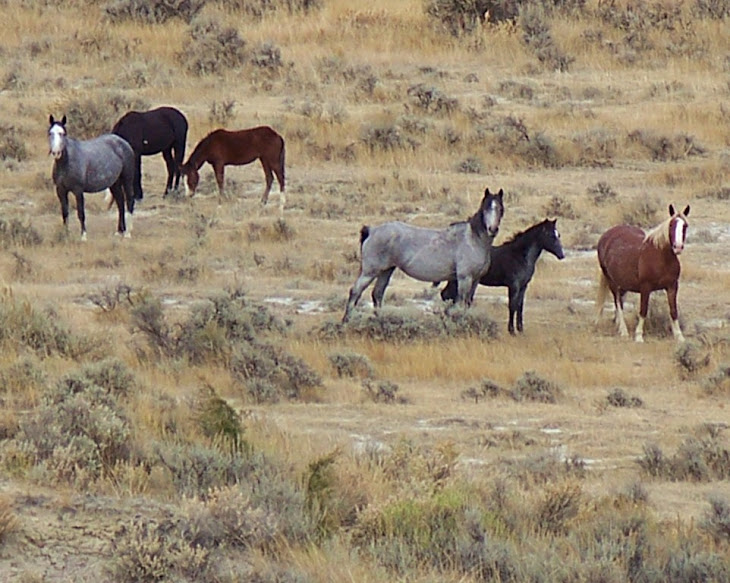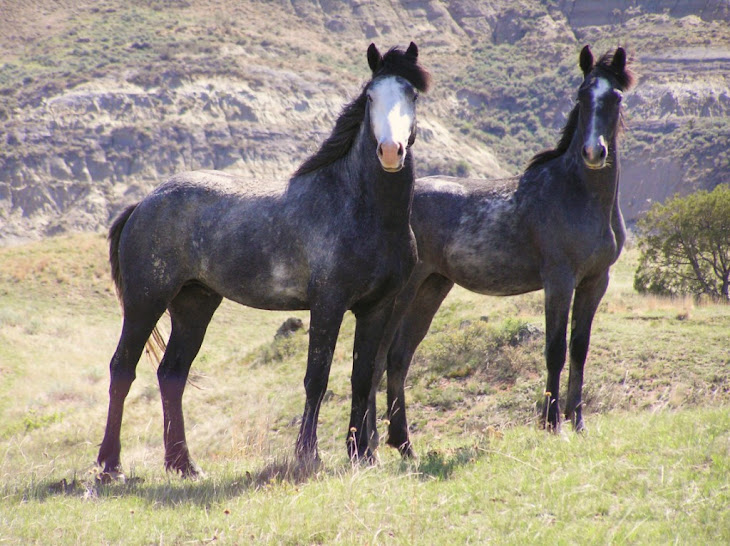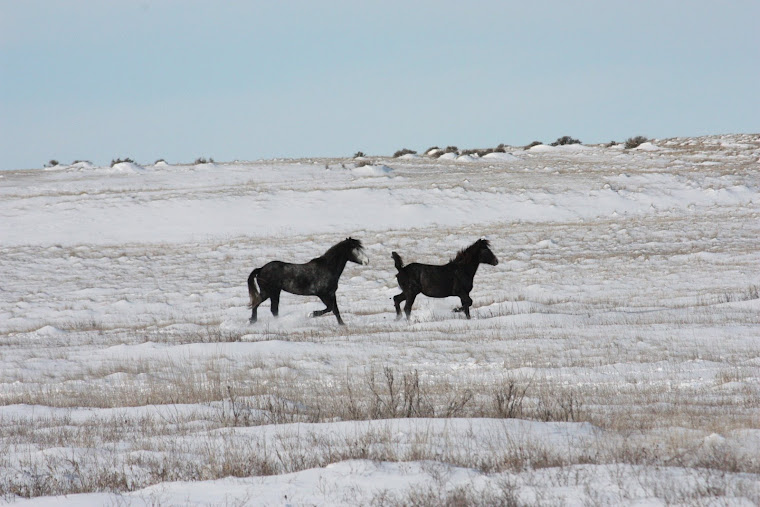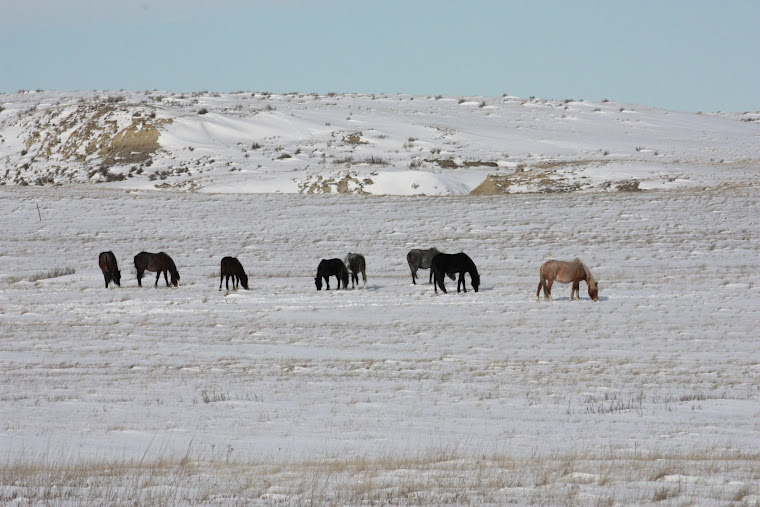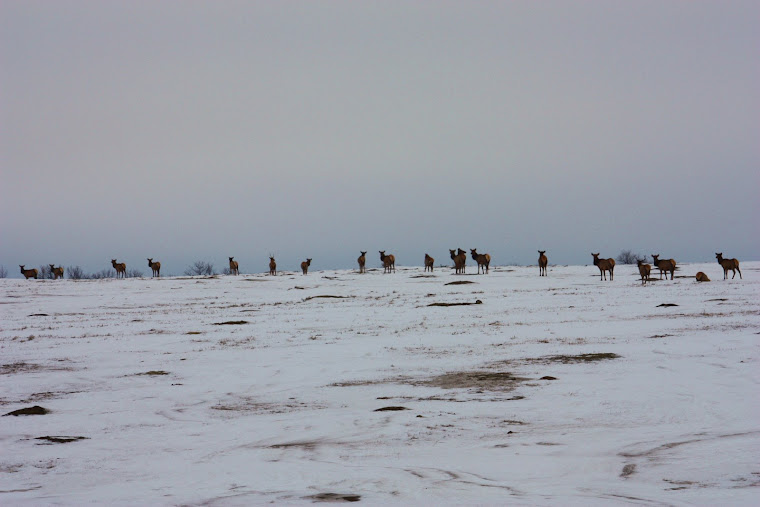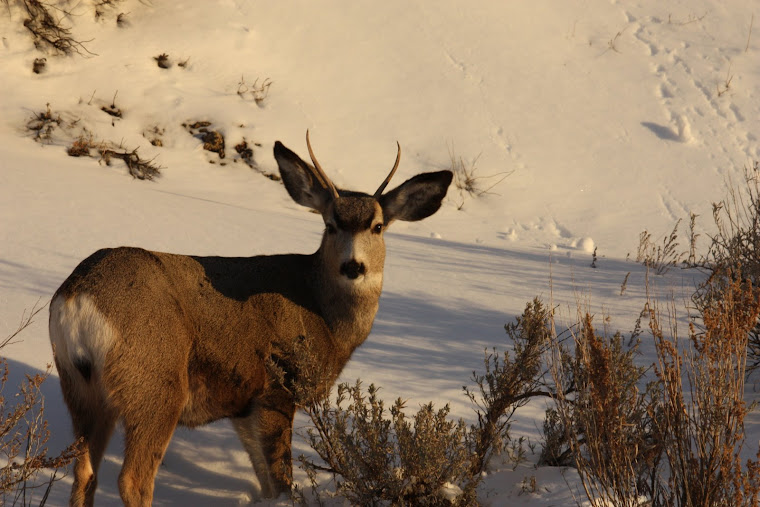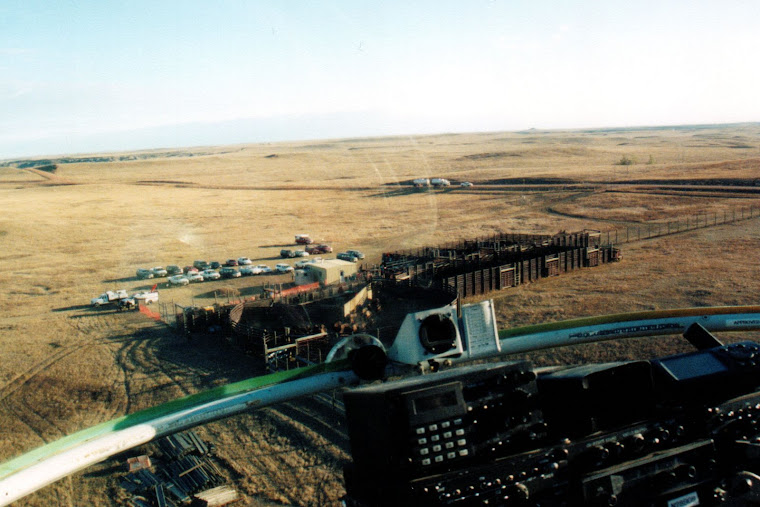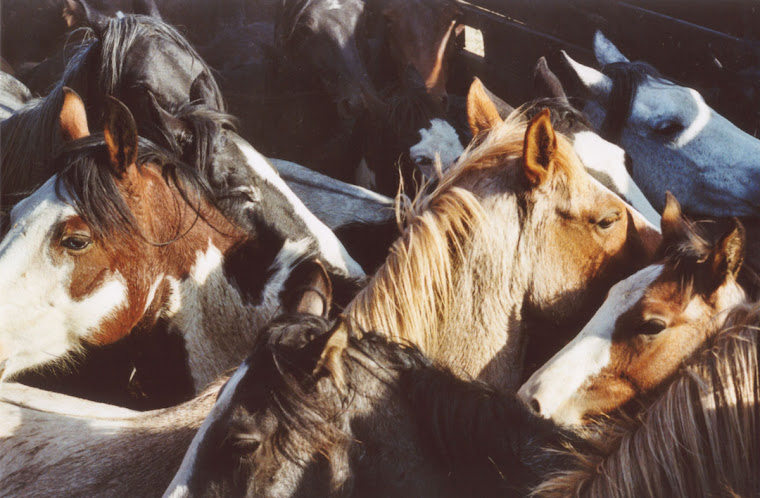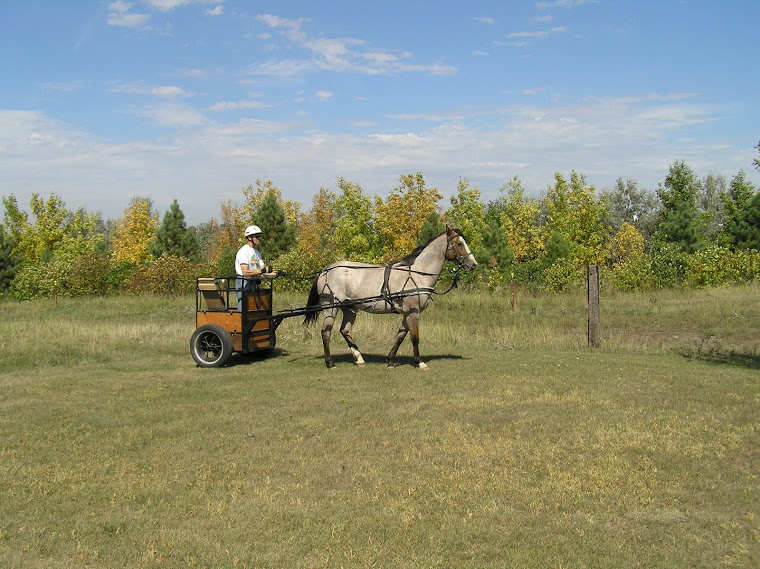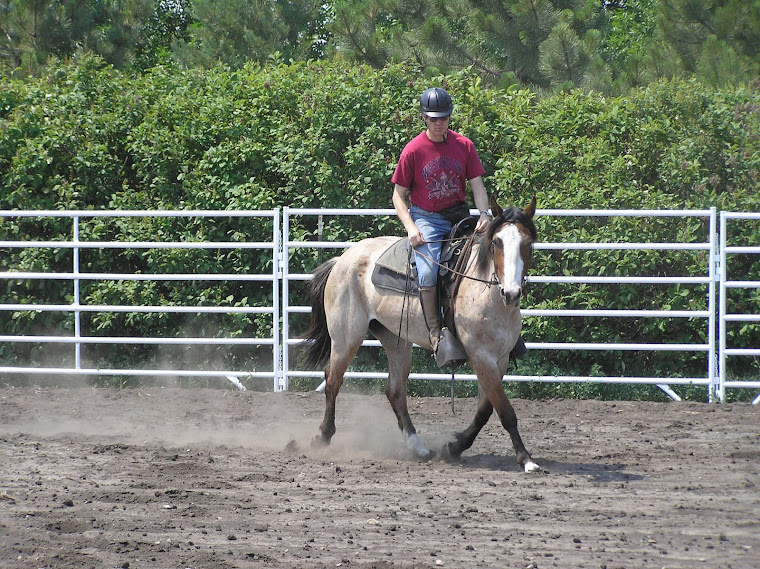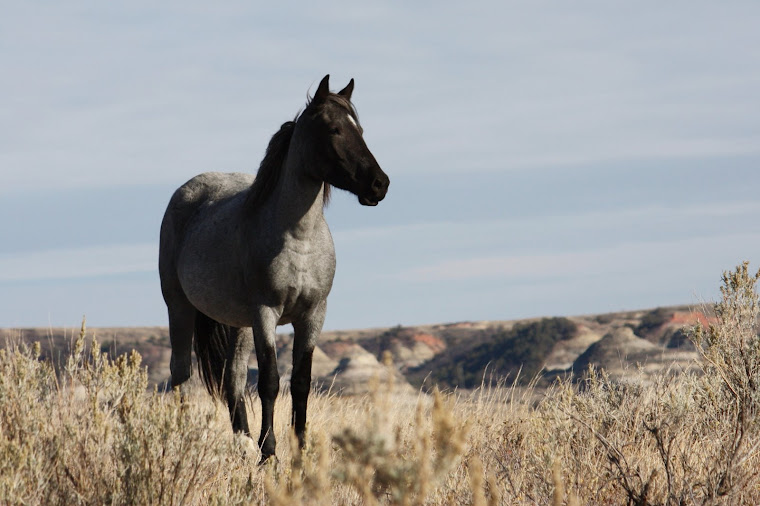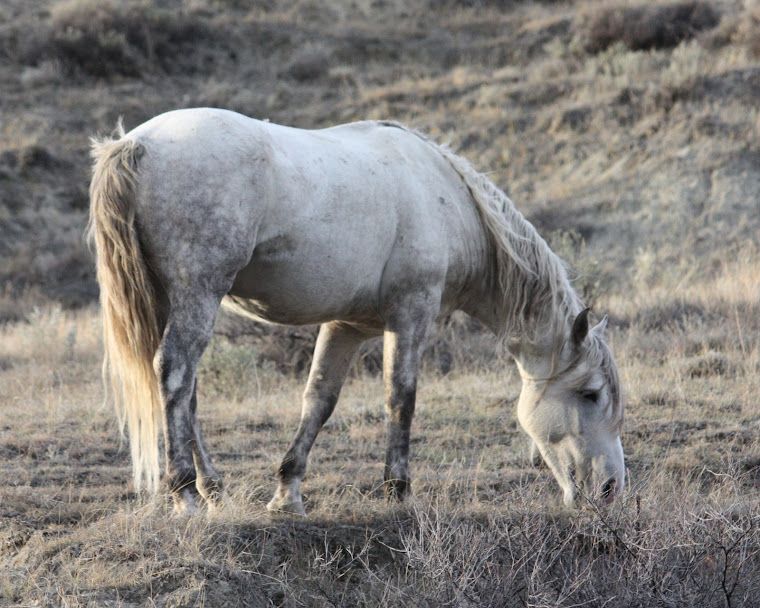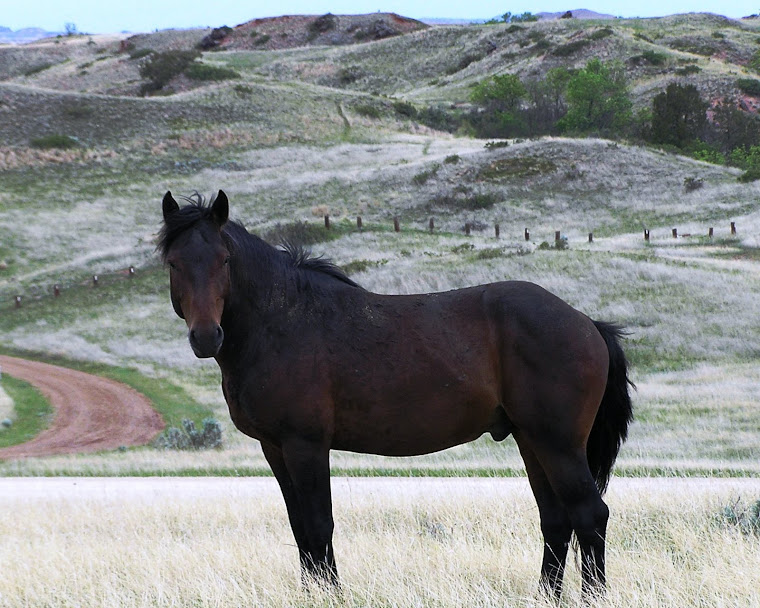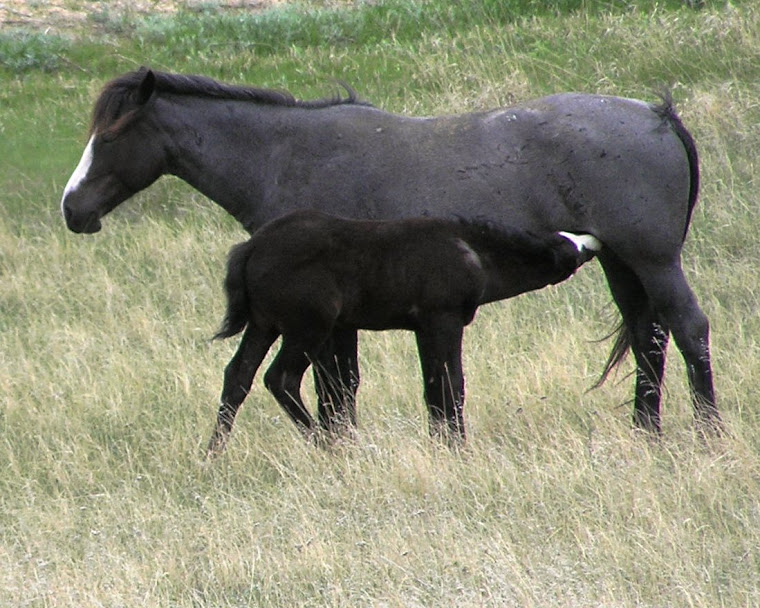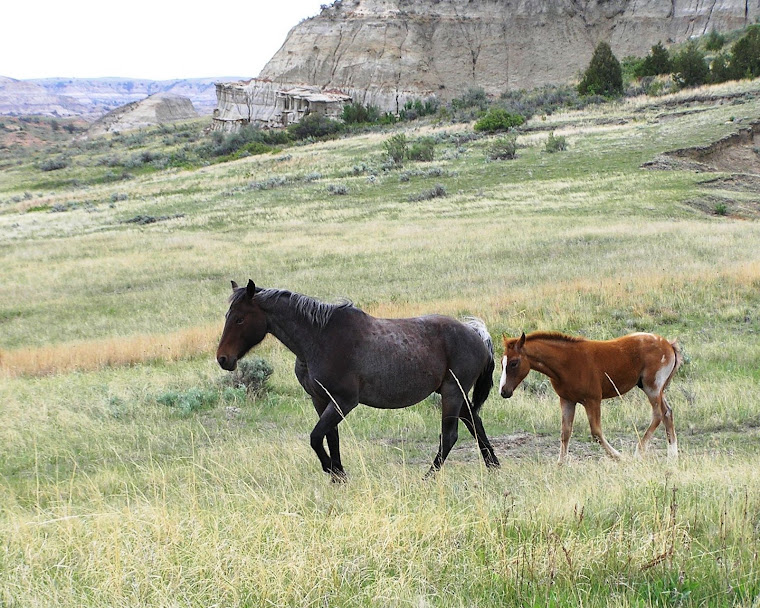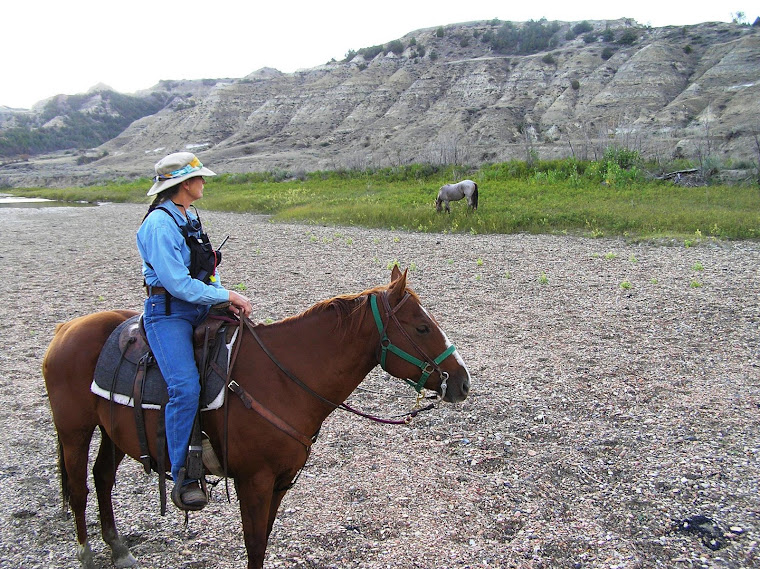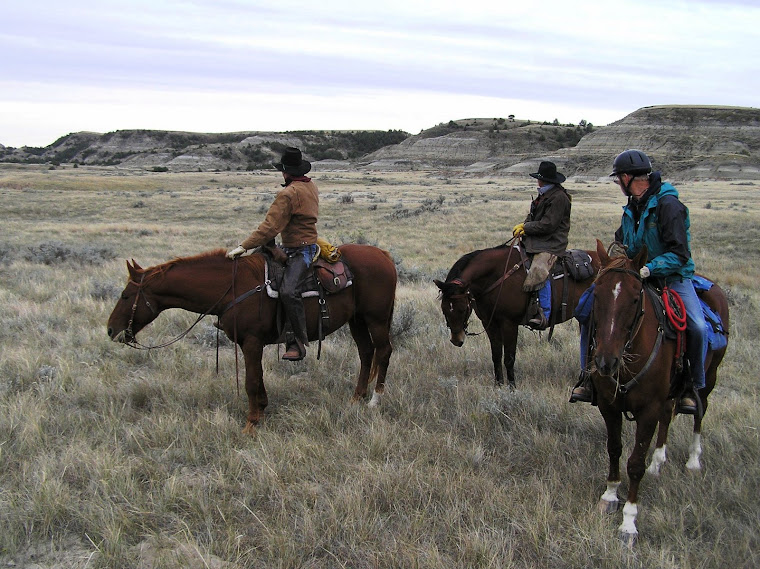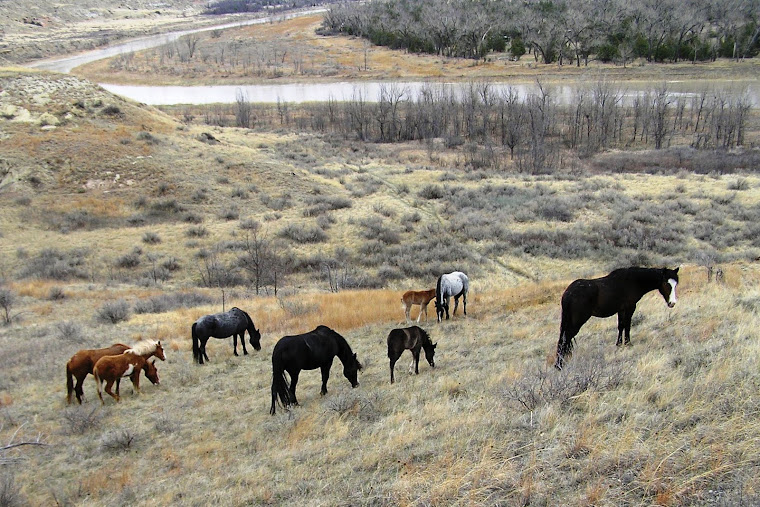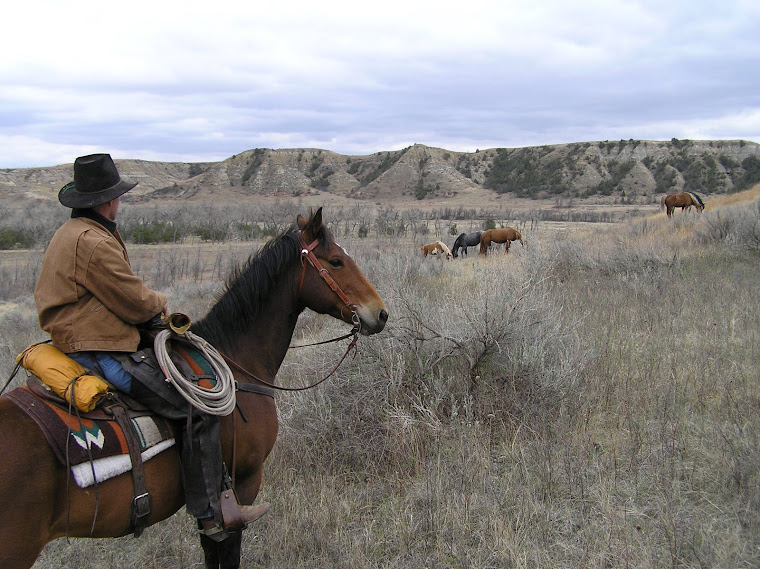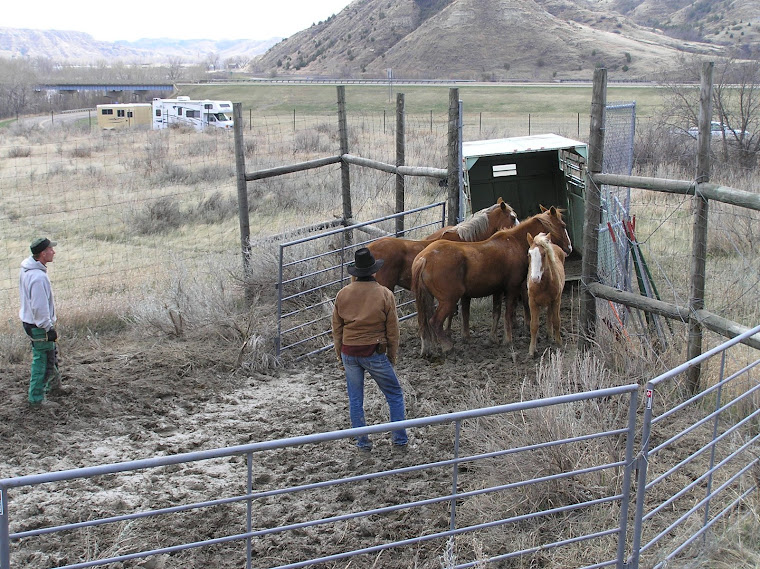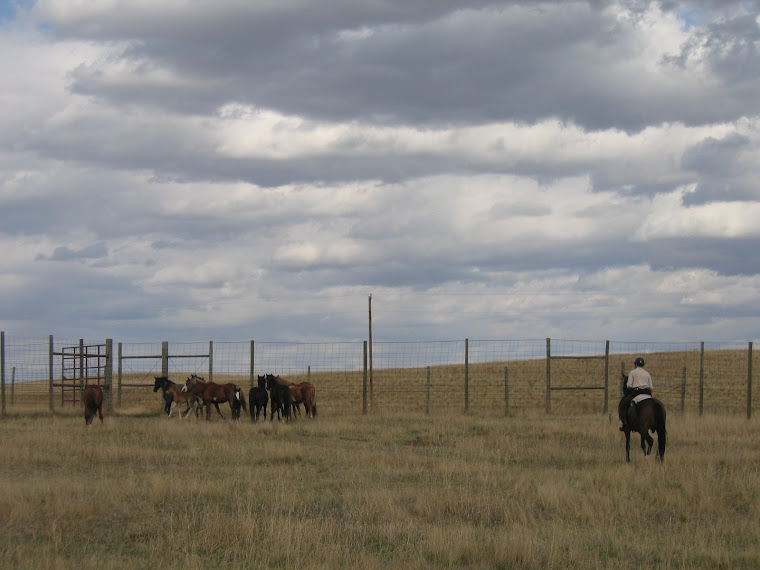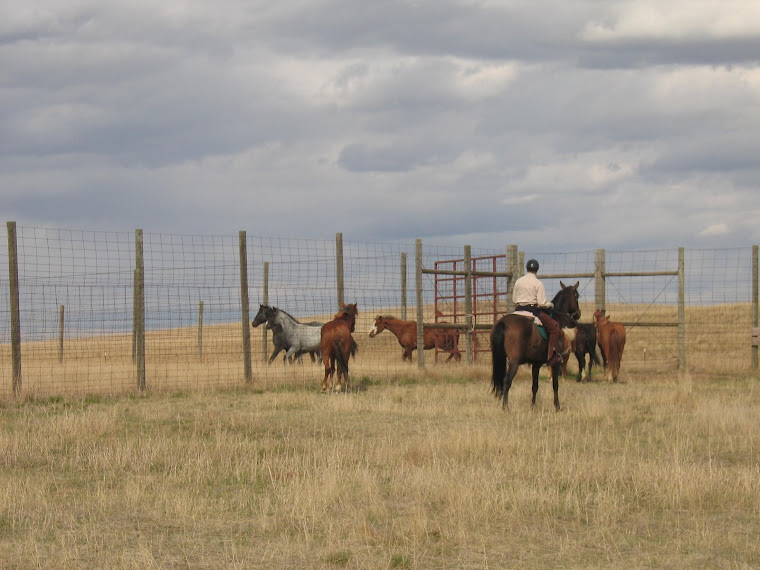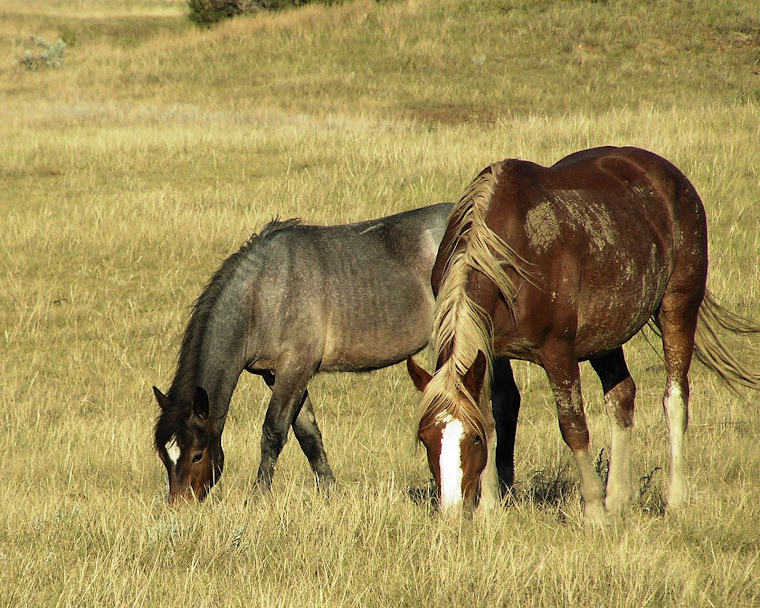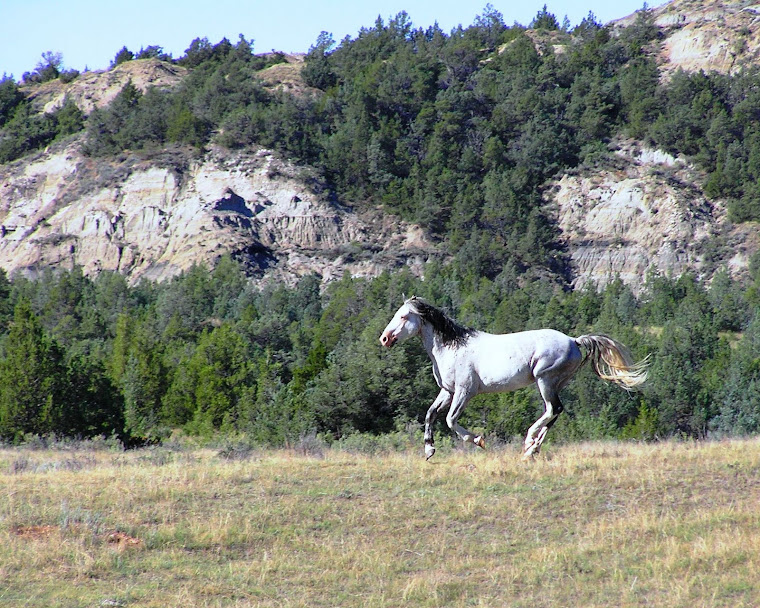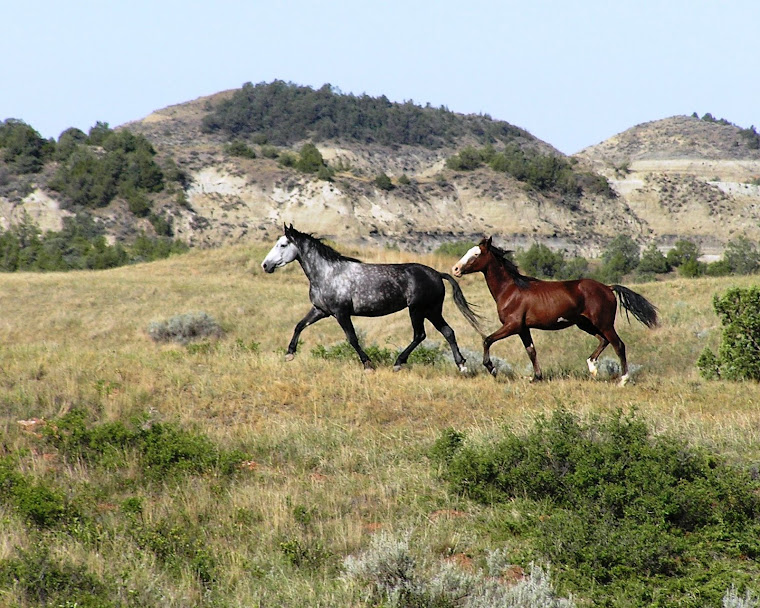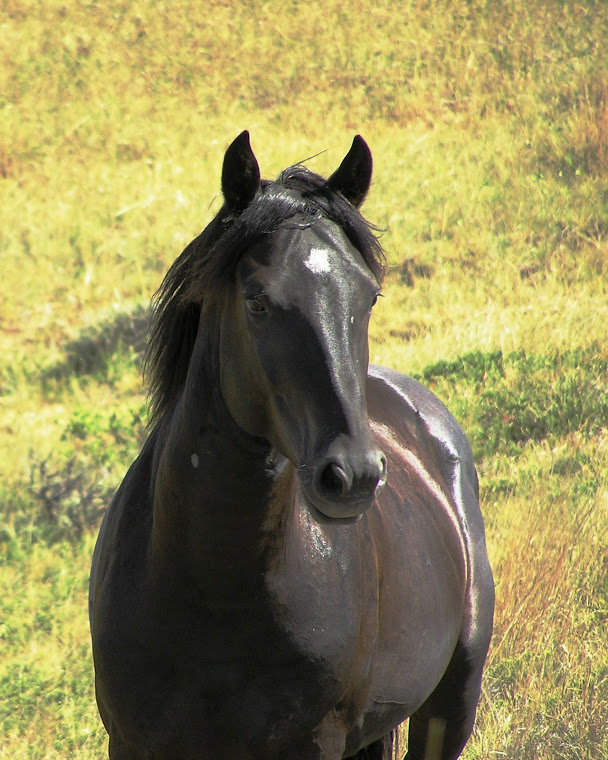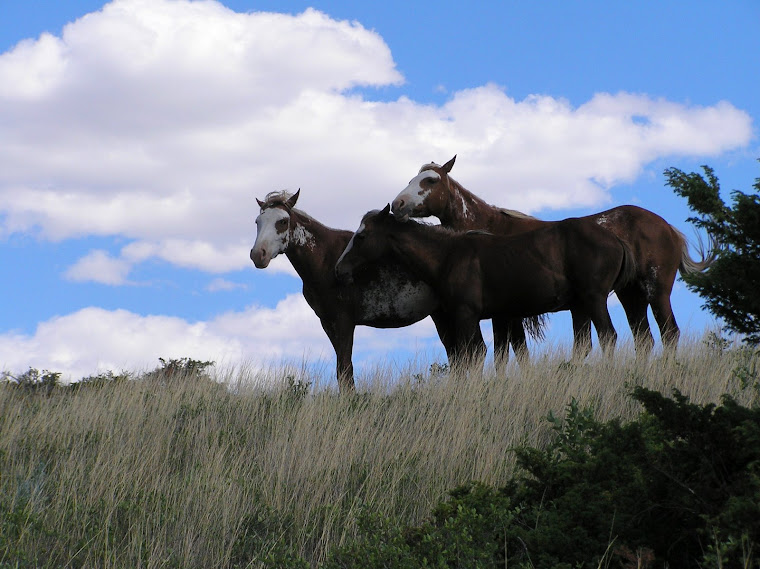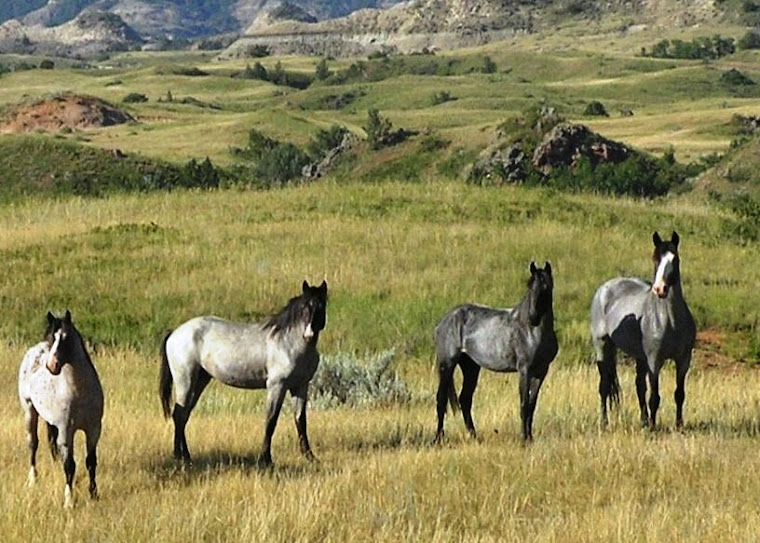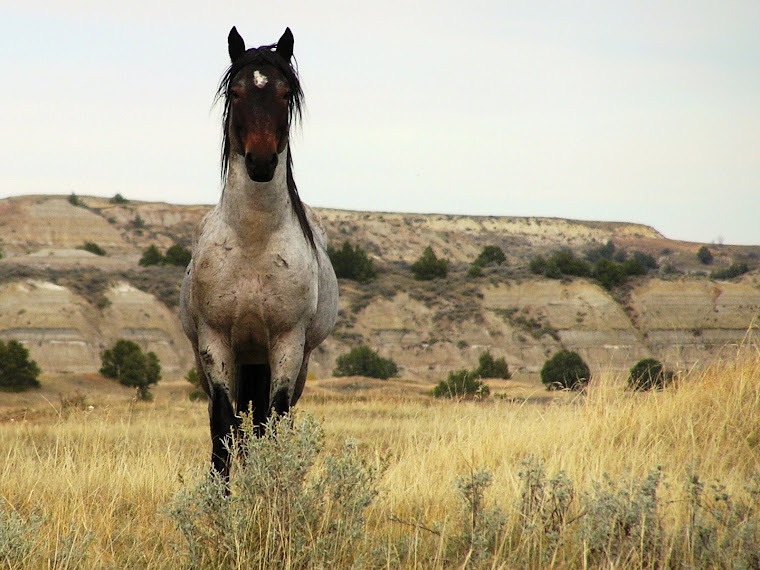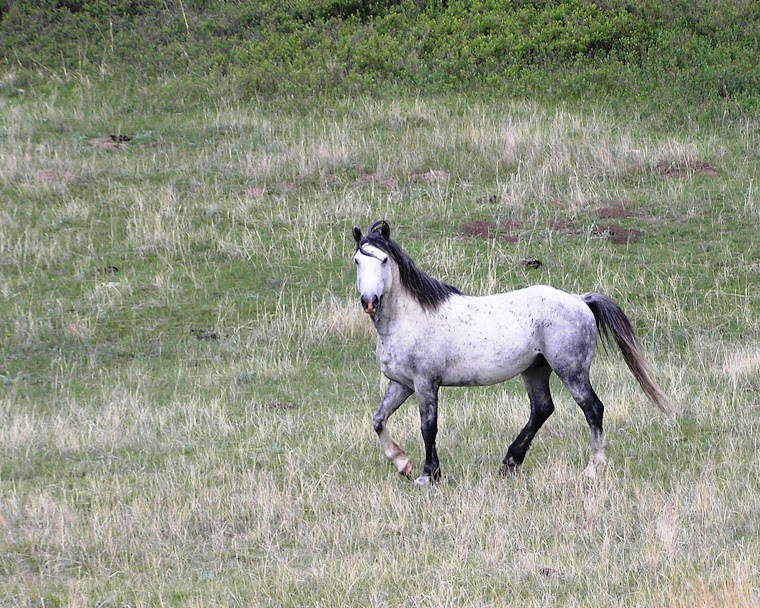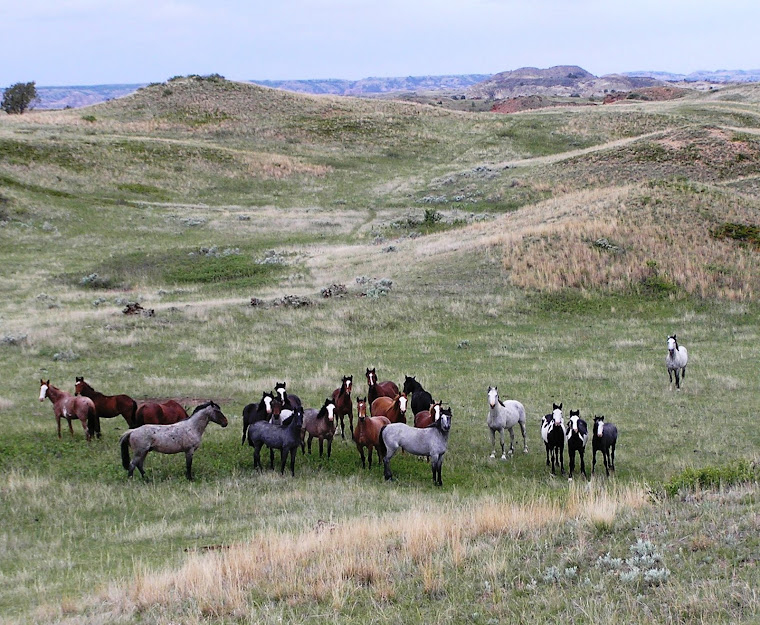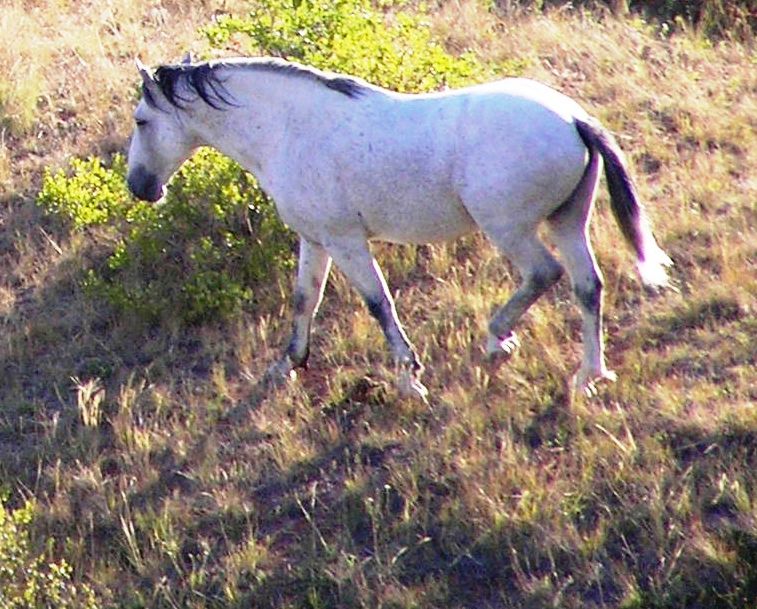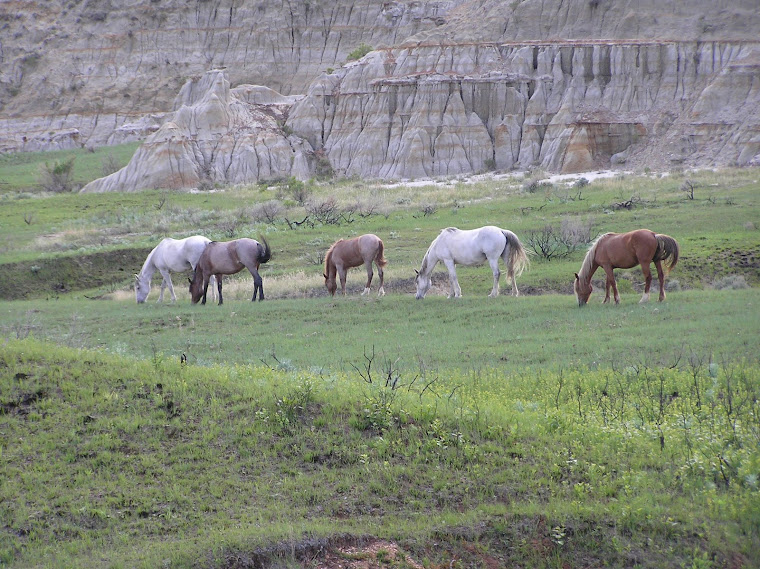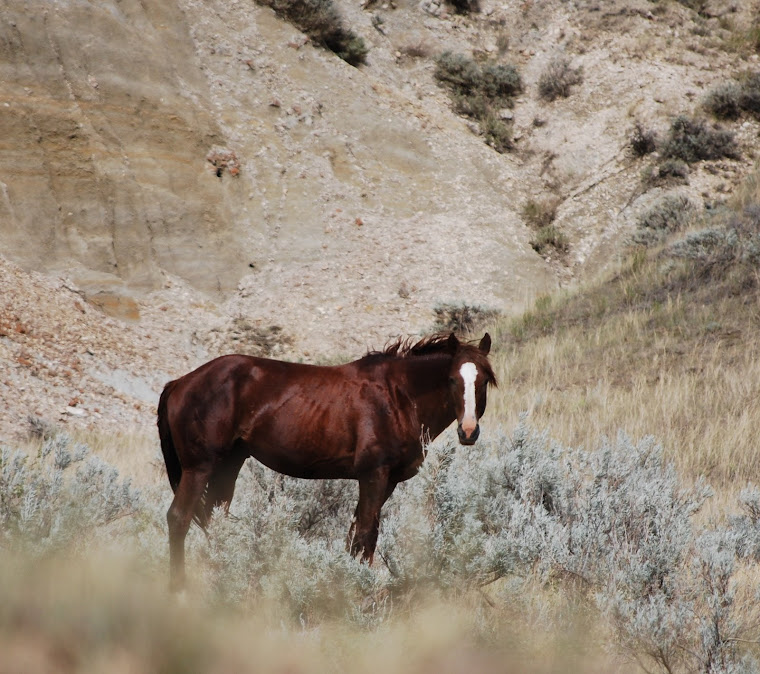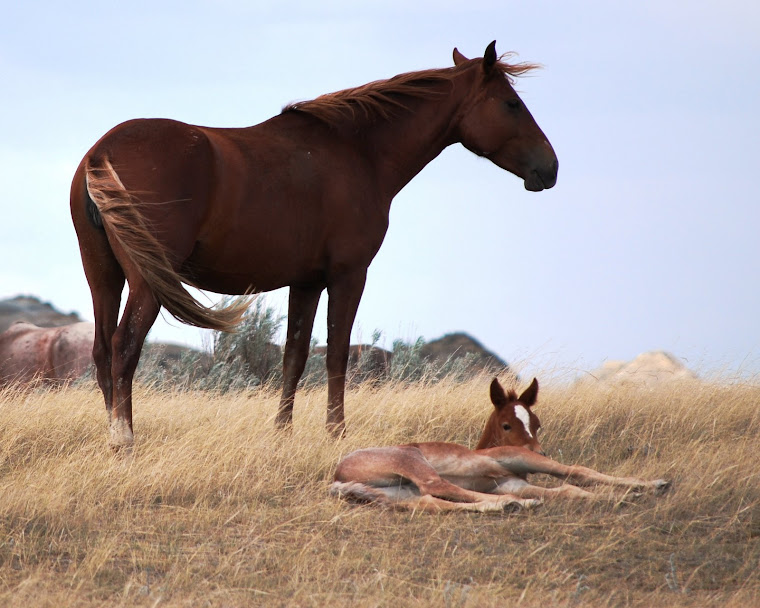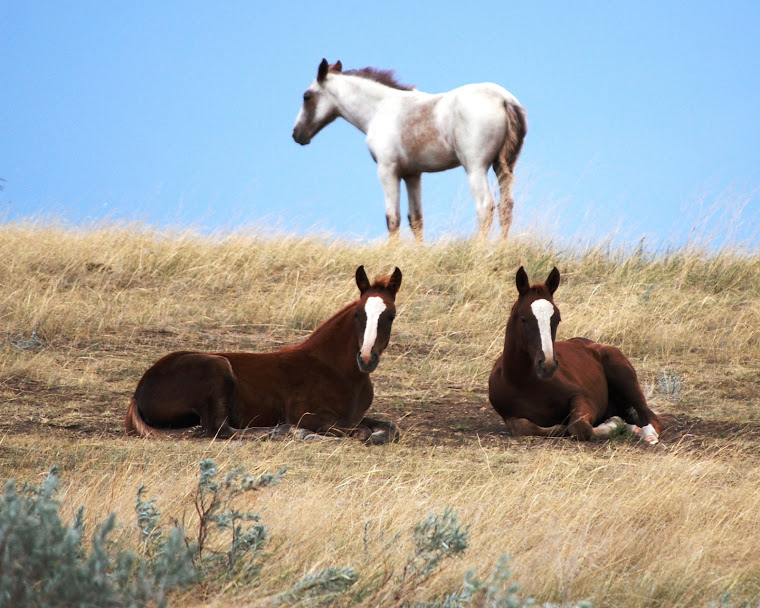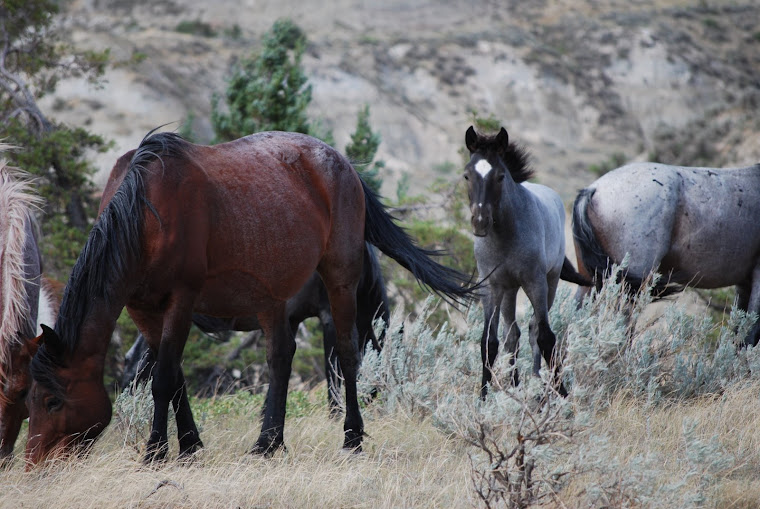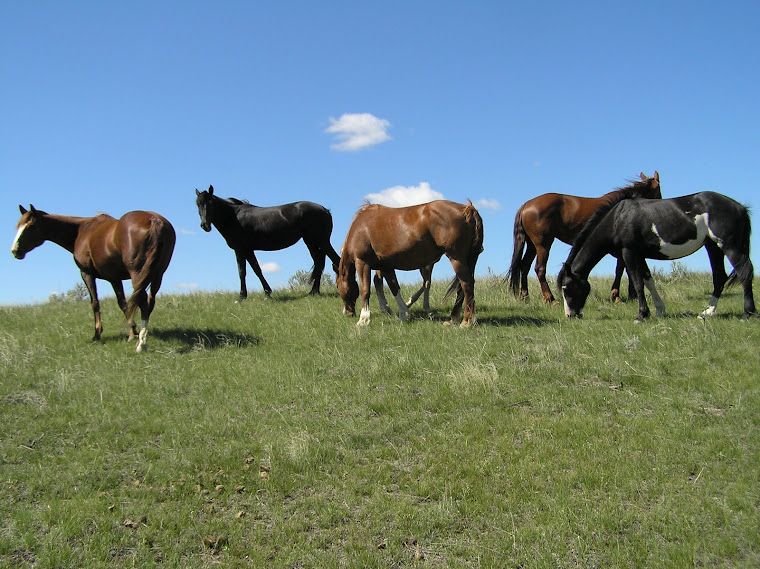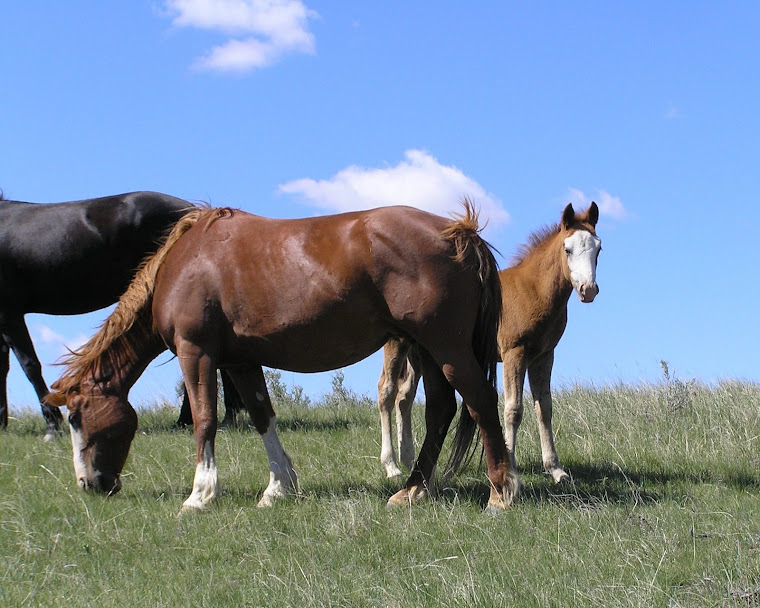It has been three months since we brought home the colts, Hail and Hawk. We have learned a little about wild horses and a lot about patience in our journey to communicate with these once wild animals. It has become apparent in visiting with many other owners of the wild horses, that each horse has his own individual personality which immensely affects the rate at which he accepts human touch and develops a trust in his human captors. It is our responsibility to learn the horse's language in order to win his trust. Time seems to be extremely important in the quest for communication as well as figuring out what motivates the horse to seek human attention. The horses are not on the same time table as we are and have not read the training books. It seems some young horses have been immediately approachable and others are still very wary. Some owners have reported an almost overnight change in the horse's acceptance of human presence and touch while many of the horses are still not convinced that there is any benefit from letting their humans near.

Our little Hail, always a more accepting individual, has become quite tolerant of touching all over his body when he is in the "play pen," the round pen. He knows that pen is where he gets rubbed and scratched. Before the storm hit this weekend, he was letting me rub him with ropes, pick up his feet, and halter him. He should be fairly easy to progress to leading once our weather improves.

Hawk continues to be my fascinating dance partner. He has now progressed to allowing me to approach him and rub his left cheek as soon as he enters the round pen. Since he had been a little sore on his right front from playing too hard with his little buddies, I am trying not to move him around the pen too much. I found that approaching him with the rhythmic forward and back swing of my hand rewarded me and him in a scratching session. When I stop scratching he still nods his head as if to say, "I like it; keep it up!" It has been important to change hands when petting him, but this was too much for him to tolerate at first. He would jump away when I reached for him with the other hand, so I made it part of our dance to pet him with one hand and then the other. If he jumped away, I would shoo him away and then invite him back. Since he craves the attention, he is usually quick to return, but if he is hesitant to approach me again, I give his hind feet the predator look and he moves them. Moving the hind feet always gets the front feet moving, and he soon returns for more scratching.
The left side has been easier to approach for some time, but it is necessary to teach both sides to allow approach and touch. I could scratch the right cheek and neck from the front, but he would move away to keep me from going to his right side. Some times we would circle in the center of the pen for several minutes, him backing away and me following, seeking to touch the right side. When he stopped, I stopped. It was here that I realized that Hawk already knows almost all of the Parelli games, the "friendly game," the "driving game," the "Yo-yo game," the "circling game," and the "squeeze game." What a smart horse! It's too bad his owner didn't catch on to "horse language" sooner.
When one of the wild horse owners discovered Winter Ticks on the horses, we were all concerned that our poor babies should have parasites feeding on them even in the dead of winter. I treated each boy with a spot insecticide, but Hawk still has them. This weekend I have discovered that the ticks are actually my allies. The ticks leave small swellings that itch, which causes Hawk to love to be scratched. When the warm still weather of Saturday's break in the storm allowed me to remove my gloves, I was able to work my fingers through Hawk's coat, starting at his head and working back all the way to his tail on the left side and back to his hip on the right. It was the first I had been that far back on his right side since I road the saddle horse in the pen with him. The rhythmic scratching and rubbing lulled Hawk into a more relaxed state than he has ever been with me. Once in a while he would seem to wake up and realize I was standing on the side he had never let me touch before; he would jump and move away but soon come back for the gentle massage. His head dropped and he did a lot of sighing and chewing, which showed that he was accepting and enjoying the whole procedure.
Hawk is an excellent teacher in the art of patience, him of me and me of him. I am able to dream about the times when he will completely trust me. Though this dance takes place in a snowy round pen in the middle of rural North Dakota, no ballroom gala could be more exciting or rewarding.

Our little Hail, always a more accepting individual, has become quite tolerant of touching all over his body when he is in the "play pen," the round pen. He knows that pen is where he gets rubbed and scratched. Before the storm hit this weekend, he was letting me rub him with ropes, pick up his feet, and halter him. He should be fairly easy to progress to leading once our weather improves.

Hawk continues to be my fascinating dance partner. He has now progressed to allowing me to approach him and rub his left cheek as soon as he enters the round pen. Since he had been a little sore on his right front from playing too hard with his little buddies, I am trying not to move him around the pen too much. I found that approaching him with the rhythmic forward and back swing of my hand rewarded me and him in a scratching session. When I stop scratching he still nods his head as if to say, "I like it; keep it up!" It has been important to change hands when petting him, but this was too much for him to tolerate at first. He would jump away when I reached for him with the other hand, so I made it part of our dance to pet him with one hand and then the other. If he jumped away, I would shoo him away and then invite him back. Since he craves the attention, he is usually quick to return, but if he is hesitant to approach me again, I give his hind feet the predator look and he moves them. Moving the hind feet always gets the front feet moving, and he soon returns for more scratching.
The left side has been easier to approach for some time, but it is necessary to teach both sides to allow approach and touch. I could scratch the right cheek and neck from the front, but he would move away to keep me from going to his right side. Some times we would circle in the center of the pen for several minutes, him backing away and me following, seeking to touch the right side. When he stopped, I stopped. It was here that I realized that Hawk already knows almost all of the Parelli games, the "friendly game," the "driving game," the "Yo-yo game," the "circling game," and the "squeeze game." What a smart horse! It's too bad his owner didn't catch on to "horse language" sooner.
When one of the wild horse owners discovered Winter Ticks on the horses, we were all concerned that our poor babies should have parasites feeding on them even in the dead of winter. I treated each boy with a spot insecticide, but Hawk still has them. This weekend I have discovered that the ticks are actually my allies. The ticks leave small swellings that itch, which causes Hawk to love to be scratched. When the warm still weather of Saturday's break in the storm allowed me to remove my gloves, I was able to work my fingers through Hawk's coat, starting at his head and working back all the way to his tail on the left side and back to his hip on the right. It was the first I had been that far back on his right side since I road the saddle horse in the pen with him. The rhythmic scratching and rubbing lulled Hawk into a more relaxed state than he has ever been with me. Once in a while he would seem to wake up and realize I was standing on the side he had never let me touch before; he would jump and move away but soon come back for the gentle massage. His head dropped and he did a lot of sighing and chewing, which showed that he was accepting and enjoying the whole procedure.
Hawk is an excellent teacher in the art of patience, him of me and me of him. I am able to dream about the times when he will completely trust me. Though this dance takes place in a snowy round pen in the middle of rural North Dakota, no ballroom gala could be more exciting or rewarding.




